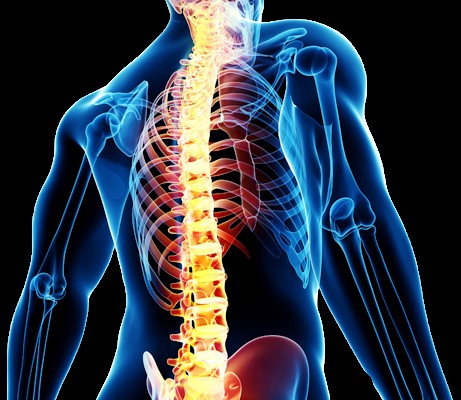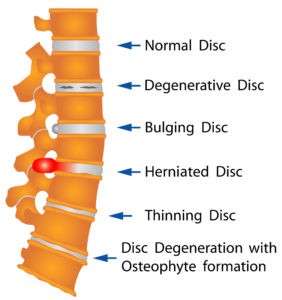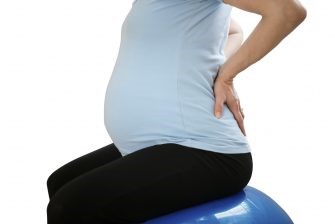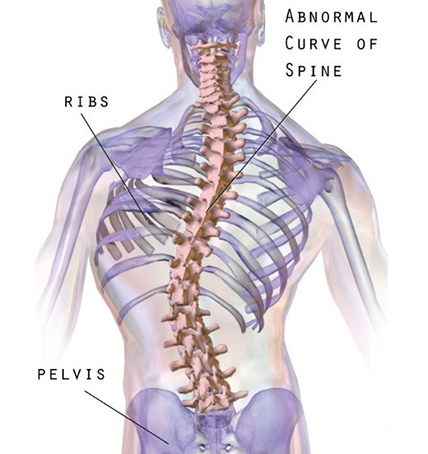Do you know that about 80% of the population suffers from spinal pain at some point in their life? In this modern society, technology advances provide us a more convenient lifestyle. However, it has also allowed us to lead a sedentary way of living. For example, we spend more time looking down on mobile phones, tend to sit for an extended period of time, and lack of regular exercise. These poor lifestyle habits can cause a negative impact on our spinal health, leading to pain and injuries. Our experts at GSG will help you to learn more about your spine and help to keep your spine healthy.

Chiropractic
According to the World Health Organization (WHO), chiropractic is defined as a health profession concerned with the diagnosis, treatment and prevention of mechanical disorders of the musculoskeletal system, and the effects of these disorders on the function of the nervous system and general health.
Our body functions are controlled via the nervous system which consists of the brain, spinal cord, and all the nerves of the body. Every muscle, joint and organ relies on nerves from the brain to control their function. Hence, if the nerves that connect the brain to the body and its organs became impeded in any way, the function of affected tissues and organs can be compromised leading to symptoms such as numbness, pain or stiffness.
Without prescribing drugs and surgery, chiropractors aim to restore the optimal function of the nervous system by correcting alignment problems, reducing pain, improving function and supporting your body’s natural ability to heal itself. Chiropractic services are used most often to treat neuromusculoskeletal complaints, including but not limited to back pain, neck pain, pain in the joints of the arms or legs, and headaches.
Physiotherapy
Physiotherapy, also known as physical therapy, is a health profession concerned with any physical dysfunction or injury that prevents the body from functioning to its full potential. Physiotherapists use specially designed therapeutic exercises, manual therapy, physical modalities such as ultrasound and electrotherapy as well as providing patient education and training to reduce pain, restore function and decrease effects of any dysfunction.
Physiotherapists are well-trained health professionals who provide treatment for people suffering from sports related injuries, spinal injuries, and problems arising from illnesses, diseases and ageing. They often work together with other health providers depending on the patient’s condition. Our physiotherapists at GSG can provide a detailed assessment and devise an individualized treatment to suit our patient’s specific requirements, helping them to improve their quality of life.
Sports Medicine
Sports medicine is a medical practice that deals with physical fitness and the treatment and prevention of sports and exercise injuries. Sports medicine doctors help people who have suffered injuries to improve their mobility as early as possible and restore their function to its full potential. Although sports medicine doctors work frequently with professional athletes, they also treat children, teens and adults involved in sports and exercises as well as people who have physically demanding jobs.
Sport medicine doctors treat a wide range of conditions, including ankle sprains, strains, fractures, dislocations, tendonitis, knee and shoulder injuries, and overtraining syndrome. They can also provide advice on exercise, nutrition, supplements, and injury prevention.
Osteopathy
Osteopathy is an alternative medicine that takes a holistic approach of the human body to healthcare. It emphasizes on the relationship between body systems and musculoskeletal system, believing that a good structural balance is essential for good health. Osteopaths believe that if the musculoskeletal system is not properly aligned, the functions of all other body systems will be affected. They often use hands-on techniques known as osteopathic manipulation treatments to correct the imbalances and dysfunctions.
Orthopedic
Orthopedic is a field of medicine concerned with the diagnosis, treatment and prevention of patients with injuries and disorders of the musculoskeletal system. Orthopedists cares for patients of all ages and treat a variety of conditions such as trauma, fractures, degenerative diseases, sports injuries, disc herniation, scoliosis, tumors, and congenital issues. They use medical, physical, rehabilitation and surgical approach to treat conditions related to the musculoskeletal system. Some orthopedists may specialize in treating the spine, extremities, trauma, sports injuries and pediatrics conditions. For most orthopedic diseases and injuries, there is more than one form of treatment. Discuss with our orthopedists at GSG on the possible treatment options and they will help you to choose the best treatment plan for your condition.
Conditions that affect spinal health :
Lower Back Pain
If you have lower back pain, you are not alone. Back pain is the single leading cause of job-related disability worldwide. It can affect people of all ages, from adolescents to the elderly. There are many risk factors for lower back pain, including sedentary lifestyle, prolonged sitting, poor posture, genetics, aging, pregnancy, and occupational hazards such as heavy lifting, twisting or vibrating the spine.
Our lower back is made up of the lumbar spine which consists of five vertebrae (L1-L5), although some people have a sixth lumbar vertebra. Lower back pain is pain or discomfort located between the 12th rib and fold of the buttock. Most back pain cases are mechanical which results from disorders of the lumbar spine and the joints, intervertebral discs, ligaments, muscles, and nerves around it. Occasionally, back pain is associated with more serious conditions, such as cancer, infection, inflammatory arthritis, fracture, or organ system disorders. It is important to speak to your health care professional if you suffer from a back pain to find out the cause and receive proper treatment and advice. Read some examples of causes of low back pain below or talk to our experts at GSG to know more.
→ Muscle strains and ligaments sprains
Sprains and strains of the lower back may occur after lifting a heavy weight from the ground, swinging a golf club, bending over to tie your shoelaces or falling. Sprains are tears in ligaments, and strains are caused by tearing in tendon or muscle. The lower back is more prone to injuries when an individual’s physical conditioning is poor and there is an imbalance in the supporting muscles. Having a sedentary lifestyle, poor posture, and bad lifting techniques can contribute to risk of developing a weak back.
→ Degenerative Disc Disease
The intervertebral disc is made up of a tough outer layer known as annulus fibrosis that surrounds the soft jelly like center called nucleus pulposus. The disc functions as spinal shock absorber and transmits loads from one vertebral body to next and allow rocking and sliding movements of the spine. The disc loses hydration and its cushioning ability gradually as we age or after an injury to the spine. A degenerated disc can be asymptomatic, just like aging skin. However, a simple tear of the annulus fibrosis or derangement of the nucleus fibrosus can cause back pain. If the disc deteriorates further, the spinal nerve roots or spinal cord can be compressed due to narrowing of disc space or bony overgrowths called spurs.
→ Disc Herniation
A herniated disc occurs when some of the softer “jelly” or nucleus pulposus pushes out through a tear in the annulus. If the protrusion of nucleus pulposus is smaller and still contained within the annulus, it is known as bulging disc. A disc may herniate because of accumulated minor injuries or a sudden, traumatic injury. Herniation of disc can irritate and compress the spinal nerve root next to it often causing sharp, shooting leg pain. A herniated disc can also cause numbness and weakness in the legs. Rarely, paralysis of both legs if the spinal cord is compressed.

→ Sciatica
The sciatic nerve is the widest and longest nerve in the body. It travels through the buttock and extends down the back of the leg. A herniated disc, bone spur and narrowing of space between vertebrae can put pressure on the sciatic nerve causing inflammation, pain or numbness down one leg.
→ Lumbar spinal stenosis
Lumbar spinal stenosis is narrowing of spinal column in the lower back. The encroachment can be due to bony overgrowths, calcified ligaments, disc herniation or congenital defects. This may lead to pressure on the nerves and spinal cord causing lower back pain and leg pain. Overtime, it can also cause weakness and loss of sensation in the affected leg. People with this condition often find relief after resting or maintaining a flexed posture.
→ Spondylolisthesis
Spondylolisthesis is the displacement of a lower back vertebra over the one below it. The vertebra can slip forward, backward or to the side. It usually occurs in people who have birth defects in their spine, bone abnormality, stress fracture, degenerative joints or sudden trauma to the spine. If the vertebra is displaced too far, it can result in pain or increase risk of developing lumbar spinal stenosis.
Neck pain
Our neck, also known as the cervical spine, is made up of seven vertebrae. It supports the full weight of our head, which is on about twelve pounds. It moves the head in nearly every direction. However, this flexibility makes it susceptible to wear and tear and injuries, causing neck pain. Along with lower back pain, pain in the neck is also a very common health complaint.
Most of the causes of lower back pain can also cause neck pain, such as sprains or strains, normal aging, osteoarthritis, degenerative disc disease, and spinal stenosis. Bad posture, prolonged computer or phone use, obesity, falls, accidents, and muscle imbalance can contribute to risk of developing a neck pain.
Pelvic girdle pain
The pelvic girdle is also known as pelvis, and it is made up of a ring-like bony structure connecting the trunk and lower limbs. Pelvic girdle pain is pain located between posterior iliac crest and gluteal fold, particularly involving the sacroiliac joints. Pelvic girdle pain is often associated with pregnancy, sitting or standing posture, fall or injury to the pelvic bones. Any of these conditions can cause the joints in the pelvis including the sacroiliac joints and pubic bone to misalign and move unevenly. The uneven movements may cause the pelvic girdle to become less stable, resulting in pain, stiffness or restriction in the joints.
People with pelvic girdle pain may find walking, standing, climbing stairs and turning over in bed challenging. The pain can also radiate into the lower back, groin, thigh, hip and knee joints. Speak to our GSG experts if you suspect you are having a pelvic girdle pain for proper assessment and treatment.

Scoliosis
Scoliosis is a back condition in which there is a sideways curvature of the spine that is usually three-dimensional. It can affect the lumbar spine, thoracic spine or go from the upper to lower part of the spine known as the thoracolumbar region. The curve can appear as either a “C” shape or “S” shape. Scoliosis can be classified as non-structural and structural. A non-structural scoliosis is also called as functional or postural scoliosis, whereby the curve changes or goes away when the individual bends forwards or sideways. A functional scoliosis is usually mild and can be due to leg length discrepancies, pelvic misalignment, disc herniation, muscle spasm or imbalance. This type of scoliosis can be corrected by treating the primary cause. In the cases of a structural scoliosis, the curve is more rigid and doesn’t go away when the person changes position. The cause of a structural scoliosis is mostly unknown or idiopathic and it is the most common cause of scoliosis. Structural scoliosis can also be secondary to congenital disorders, neuromuscular conditions, trauma, tumor, or metabolic disorders.
Scoliosis develops mainly in children between the ages of 10 and 16 during the growth spurt of puberty and early adolescence. It can affect boys and girls equally but in girls, the risk of progression of the curve tends to be greater. Most people with scoliosis do not have pain, hence mild scoliosis can develop without being noticed by the child or the parents. However, in cases with severe curvature, it can interfere with breathing or causing chronic pain in the back or heart problems. If you suspect your child may have a scoliosis, there are a few signs that you can look out for such as asymmetrical shoulders, pelvis, waist or ribs, upper or lower back hump, prominent shoulder blade or a visible curve. When a scoliosis is suspected, an X-ray should be performed to confirm the diagnosis. The treatment for scoliosis depends upon the type of condition, severity and progression of the curve, skeletal maturity, sex and age of the patient. Learn more about scoliosis and its management with our doctors in GSG.
